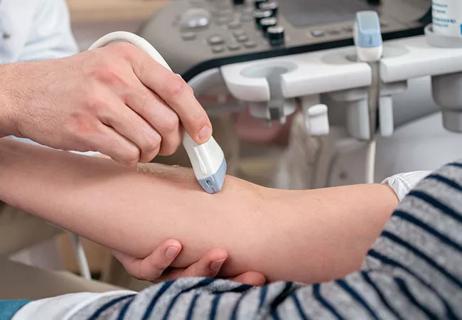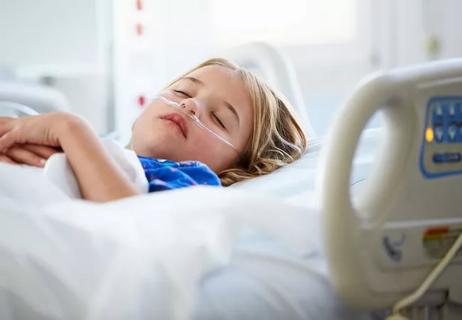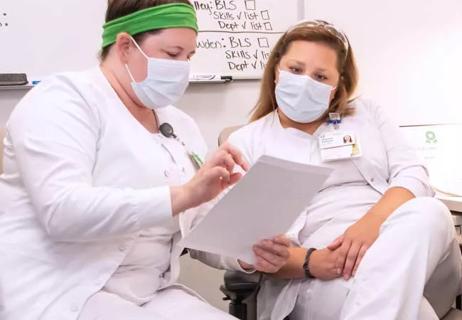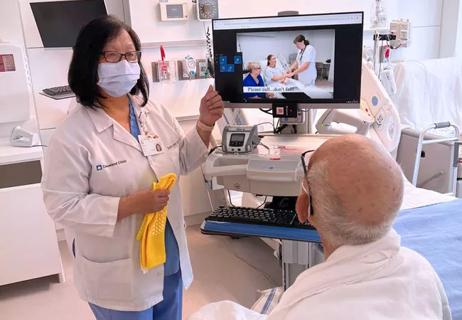A research study was initiated to determine whether Visilert, a timing device with green-yellow-red lights, enhances medical-surgical patients’ perceptions of nursing care, satisfaction with hospital care and clinical outcomes. The small device attaches to the wall outside patients rooms and is set to count down at 60-minute intervals.
Cleveland Clinic is a non-profit academic medical center. Advertising on our site helps support our mission. We do not endorse non-Cleveland Clinic products or services. Policy
“Visilert tracks time between rounds so staff can focus on caring for patients, not counting minutes,” says Ellen Slifcak, BA, RN, research coordinator of the study. “It provides a quiet visual signal to improve consistency with hourly purposeful patient rounding.”
The purpose of the study was to examine:
Patients’ perceptions of feeling cared for and trusting nurses — using valid, reliable questionnaires
Satisfaction with hospital care — based on Hospital Consumer Assessment of Healthcare Providers and Systems (HCAHPS) and Press Ganey (PG) findings
Clinical outcomes — specifically, length of stay, discharge disposition (home versus other dispositions), transfer to ICU and fall events
The research design was complex. Within three Cleveland Clinic hospitals (main campus, a 500-bed regional teaching hospital, and a 100-bed regional hospital and rehabilitation center), six hospital units were randomized to usual nursing care rounding (three units) or care rounding with Visilert devices as a reminder (three units) of timing.
Further, three separate cohorts of patients were included in this study.
In analysis, there were no differences in patients’ perceptions of feeling cared for by nurses, trust in nurses, or in HCAHPS/PG survey items, except that patients in the Visilert group were more likely to select top-box scores for nurses getting patients to the bathroom. Finally, there were no between-group differences in clinical outcomes; however, it was observed that fall rates were 20 percent lower among patients in the Visilert group.
In summary, the Visilert device provided a wonderful visual cue to nurses and patient care assistants that rounding should occur, but consistency in the frequency of patient encounters through rounding is not a surrogate for what happens when nursing staff connect with patients.
“In this research study, clinical nurses on all six units delivered consistent nursing care to patients, regardless of availability of a visual rounding cue. The one exception was that patients in the Visilert group felt that nurses were better able to meet bathroom needs,” says Nancy Albert, PhD, CCNS, CCRN, NE-BC, FAAN, principal investigator.
“Immediacy of bathroom needs can be a precursor to fall events and a marker of general patient satisfaction with hospital care. Future research is needed to learn if a visual reminder of when to repeat assessment of bathroom needs enhances patient safety during hospitalization,” Dr. Albert states.
Jessica Lachman, MSN, RN, Nurse Manager of the Cleveland Clinic main campus intervention unit, says, “The Visilert device served as a visual cue for all staff of the ongoing need to purposefully check on patients. When the Visilert indicator light was red, staff knew they needed to act.”
In addition to Dr. Albert, Lachman and Slifcak, the research team included James F. Bena, MS; Shannon M. Morrison, MS; Jared Leal, BSN, RN; Maria Grbac, BSN, RN, and Matthew Drew, MSN, RN.

Study shows ultrasound can be valuable tool for improving patient satisfaction by reducing failed IV insertions

New system uses vital signs to predict need for further intervention

Findings reveal personal and professional factors that influence nurses’ interest in medical research

Nurse scientists bridge divide between bench and bedside

Individual and population factors play a role

Study looks at cardiopulmonary arrest and activation rates

Video education and nurse-led reinforcement help with fall risk awareness

Further research into collaborations may help strengthen nursing science